Latin America’s biodiversity offers cosmetics companies a wealth of choice when it comes to ingredients. Pacifica Goddard reports from Caracas
The organic cosmetics market has been booming over the last few years, generating substantial consumer interest in the US and Europe. As cosmetic companies scramble to offer the latest, most effective natural ingredients, many are turning to the biodiverse region of Latin America for inspiration.
“The market for Latin American ingredients is quickly gaining strength. For example Avon has launched a new line called Avon Naturals, made only with native ingredients from Latin America including avocado, banana, mango and even guaraná,” says Camila Toledo, Latin America trend director for Stylesight, an online provider of trends and technology for professionals in the fashion and style industries.
Lots of ingredients grown abundantly in the region have diverse beneficial qualities and have proved to be excellent bases for cosmetics such as avocado butter, babassu oil, cocoa butter, mango butter, coconut oil, Brazil nut oil and jojoba oil.
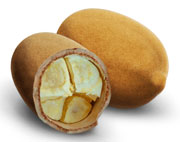
Cupuaçu
Latin American ingredients are starting to appear everywhere from mass market cosmetics to high-end anti-ageing lines. For example, J Sabatelli Brazil Cosmetics has combined Amerindian traditions with modern cosmetic technology to create the first anti-ageing skin care line infused with seven oils and extracts found in the Brazilian rainforest. These ingredients help fight the effects of oxidation and cellular damage and are US certified organic and sustainably harvested.
With accumulated growth of 165% in exports between 2005 and 2009, Brazilian beauty products can already be found in 135 countries, according to ABIHPEC, the Brazilian toiletry, perfumery and cosmetic association. Lines such as J Sabatelli boast unique Amazonian ingredients which have gained popularity not only in the cosmetics-hungry US and European markets, but at home in Latin America.
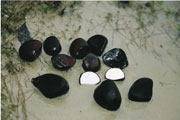
Andiroba fruit
Toledo, who has also worked for Devene, a leading cosmetics company in Brazil, comments: “Products from the US and Europe often seem more industrial and full of chemicals so local products are becoming more important each season. Brazilian companies like Natura, Phytoervas and Ox have introduced special marketing campaigns tailored to promote these products.”
Filipe Sabará, director of Beraca, a Brazilian company specialising in the development of raw materials for a variety of purposes including food and cosmetics says: “As a company we have gone through this big change by first being rewarded in the outside market to then being valued inside.” Sabará notes that Brazil is close to becoming the second largest market for cosmetics in the world, and consumer preferences are changing rapidly. “The Brazilian market used to be looking for innovation from outside of Brazil, but in the past five years, we have seen that the Brazilian population is becoming more aware of the value of the biodiversity that we have. Brazilians are starting to be very patriotic about our resources... and very worried about how to take care of our richest treasure, the Amazon forest.”
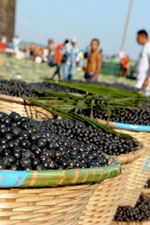
Açai
Sabará says domestic consumers are also attuned to sustainability. “Now the consumer is checking to see if things are being done in the right way – this is different than the past generation that were only looking for technology and the American way of life. Today we are looking for things that are Brazilian but that are sustainable and work.”
Indeed consumers across Latin America know well that the region is among the most bio-diverse in the world. The Amazon is the richest source of this biodiversity, covering over a billion acres, encompassing areas in Brazil, Venezuela, Colombia and the eastern Andean region of Ecuador and Peru, and containing more than 40,000 plant species, according to the World Wildlife Fund.
Beraca provides raw materials that have been used for centuries by Amerindian populations in the Amazon, but also invests in researching new ingredients from the region that have not previously been used. But Sabará notes that the time has passed when a company could sell products simply by virtue of their exotic origins. “People are looking for things that work – just being from Brazil isn’t good enough anymore.” He says Beraca’s current focus is investing in technology for active ingredients from Brazilian biodiversity that can supply the market with replacements for synthetics. “For example, we launched a new ingredient called pracaxi oil which is very rich in C-22, a behenic acid that can be used as a natural and organic-based conditioning agent for hair.”
He adds: “Our customers are substituting cationic surfactants or quaternaries, which are synthetics, with organic or vegetable-based ones. We have shown you can really replace chemicals with natural products and maintain efficacy.”
This year Beraca has launched two new products called AAA (anti-acne-active) and ADA (anti-dandruff-active). “They are blends of different actives and oils from Brazilian biodiversity that are very effective compared to synthetic materials, and in addition they are 100% eco-certified.”
Beraca works directly with communities from the rainforest (and other ecological zones within Brazil) to source ingredients including açai, andiroba, annato, Brazil nut, buriti, copaíba, passion fruit, cupuaçu, murumuru and Amazonian white clay.
Açai is known for its antioxidant and anti-ageing properties and is a source of phytosterols, vitamin C, polyphenols and essential fatty acids omegas 3, 6 and 9.
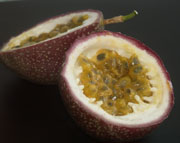
Passion fruit
The andiroba tree is used as an odourless insect repellant and an anti-inflammatory, while annato oil has a soothing topical effect, making it useful in after-sun products. But it is also rich in carotenoids, and can be used as a natural colouring agent in creams and sun tanning products.
The Brazil nut is rich in selenium, vitamins and oleic acid and buriti fruit is rich in fatty acids, carotenoids and vitamin A, and can help increase the elasticity of the skin.
Copaíba is an oily tree resin that can be used for acne treatments, dandruff control, and anti-inflammatory creams, while its resin can be used as a woody fragrance.
The oil pressed from passion fruit seeds is high in linoleic acid and omega 6, and is a powerful moisturising and nutritive agent.
Cupuaçu butter is an emollient that contains phytosterols and has an unusually high level of water absorption providing a prolonged moisturising effect.
Murumuru butter is rich in oleic acid and acts as a nutritive emollient and increases the creaminess of a product.
Beraca strives for more than just effectiveness in its products and it is the first Brazilian raw material company to be accepted by the Switzerland-based Union for Ethical Bio-Trade and functions under stringent quality control with environmental and socially responsible policies.
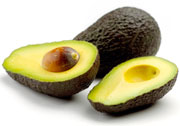
Avocado
“Our guiding principles include respect for local people, their culture and way of life, shared benefits, and co-development – helping them add value to the work that they do,” explains Sabará. “The other very important side is the preservation of biodiversity. We have environmentally correct practices and teach our partners to do their work in the forest so that the biodiversity is preserved for the future.”
Although the Amazon is the primary location of biodiversity in Latin America, beneficial and unique ingredients are not limited to this region. For instance, Rainforest Preserve, produced by the US Vista Group, features clay from lava fields of Central America for use in facemasks, exfoliants and body scrubs. Colombia’s EcoFlora is using Colombian jagua fruit to create natural blue colourings. Meanwhile Peru balsam oil is commonly used in fragrance, and wax produced naturally from the candelilla plant of Mexico is frequently used in organic products as a thickening agent.



